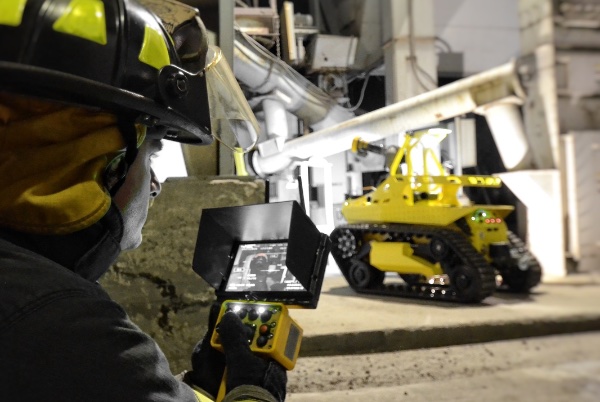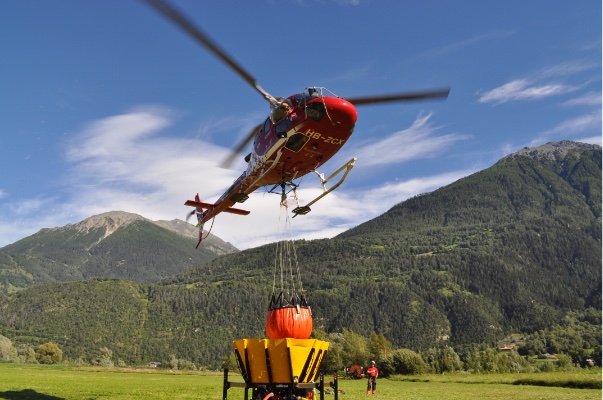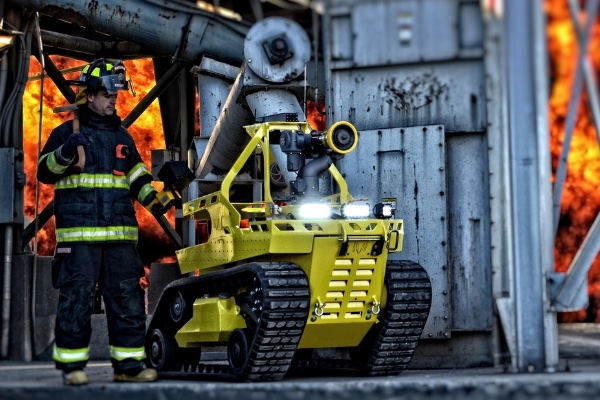FRANCESCO RODELLA | Tungsteno
For almost two months now, a fire has been burning in California that has taken on the dimensions of a "gigafire". It has already burned over a million acres and is considered the worst in the state's history. It is not alone; the entire west coast of the United States and parts of Russia, Brazil, Australia and Indonesia have all experienced devastating fires this year. Faced with seasons of this kind, which are increasingly destructive due to climate change, those in charge of dealing with emergencies seek the support of technology to respond to disasters that exceed human capabilities. Satellites, massive data analysis programs and new specialised machines offer some of this much needed assistance.
California is one of the places where decisive steps are being taken to find new solutions to deal with fires that are more intense, more frequent and more rapidly spreading than in the past. Prolonged dry spells, a lack of rain and frequent heat waves act as fire accelerators, against which specialists are often defenceless.

Simulation systems allow knowing the behavior of fires in real time, facilitating decision making and setting priorities. Credit: Howe and Howe Technologies.
Real-time simulations to stop the flames
This is where data simulators and predictive models play a critical role. An example of this is the simulation and prediction software that the California Department of Forestry and Fire Protection (Calfire) has adopted over the past year. This program is capable of integrating data from different sources and generating projections of how fires may develop once they start, as well as providing indications of where new outbreaks are most likely to occur in the next few hours and what their potential impact will be.
Thanks to this information, which is much more detailed and quicker to extract than was previously available to authorities, emergency responders have new support when making key decisions. They can thus establish priorities, determine the allocation of human and material resources, and design evacuation plans, according to its creators, the Spanish company Tecnosylva, also based in the United States.
Joaquin Ramirez, president of the company and professor at the University of Leon, explains that the data combined in these simulations come from tens of thousands of weather stations, U.S. defence satellites and specific fire cameras, among others. All this information is processed thanks to machine learning. However, Ramirez believes that the process of integrating this program into Calfire's operational methods will take time. "You have to create the technology, test it, implement it, support it, and encourage the users in its use," he says.
This type of system allows not only the recreation of fire attack operations, but also, for example, the handling of helicopters in simulated flights, the coordination of air assets and the technical direction in potential scenarios that could occur in real emergencies. The Calfire system has already been tested in the real world by the team. Unit Chief John Heggie, for example, told The Wall Street Journal that with its help many homes in an area of San Francisco Bay were saved from the flames. The same system has already been deployed in several states and companies in that country, as well as in some Spanish autonomous communities (e.g. Andalusia) and other areas of Europe.

Virtual simulation systems, satellites, big data and advanced robots become the new line of defense to anticipate and stop large fires. Credit: Vallfirest.
Robotics for complex interventions
Robotics, combined with 5G or Artificial Intelligence, has also opened up new possibilities to fight these huge fires. Robotic firefighting systems not only help to extinguish fires but can also replace firefighters in the most hostile environments. Thanks to thermal and infrared cameras, as well as sensors on board these unmanned vehicles, specialists can detect gas and chemical leaks and even see through the smoke without being exposed to danger. These devices can even have foam-dosing systems and, in their more complex versions, reach areas that are difficult to access or in danger of collapse. This enables operations that are difficult to achieve with traditional means; furthermore, it limits risks and exhaustion for emergency personnel.
The Spanish company Vallfirest, for example, has focused on these products of greater technological complexity. After Gorgui, a tool that incorporates in one piece three manual tools used to create lines of defence in fires, it has launched Dronster, a remote-controlled brushcutter robot. This machine permits the transport of equipment, employs integrated geolocation for its tracking in real time and can collect and send data of interest like humidity and temperature. According to Javier Baena, the company's CEO, it can move with more agility in burning forests than traditional bulldozers for generating firebreaks, also thanks to the fact that it is transportable by helicopter, just like its other robot Heliskid, a flexible water tank that can be transported with an integrated motor pump.
Both Ramírez and Baena believe that the fact that Spanish companies have managed to earn international trust in this area is not an isolated case. The former stresses that Spain has a very powerful community active in the field of forest fires and is made up of younger organizations that are more open to change than in countries such as the United States, despite the fact that the latter has great technological capacity. Baena also stresses that European regulations are evolving faster, requiring manufacturers to be more capable of staying up to date.
· — —
Tungsteno is a journalism laboratory to scan the essence of innovation. Devised by Materia Publicaciones Científicas for Sacyr’s blog.
